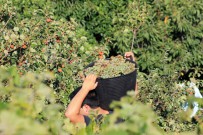-

-
We are specialists for your holidays in La Palma. With personalized assistance on-site.

Ulrich & Evelyn Roth -
Our service numbers
Write e-mail+34 822 68 00 89
+49 7442 819 85 90
We're available from Monday to Friday from 10:00 a.m. to 6:00 p.m., and Saturdays from 10:00 a.m. to 1:00 p.m.
-
Accommodations
- with pool 92
- on the seaside 48
- with internet 210
-
Northwest >>
130
- Aguatavar 7
- Arecida 6
- El Castillo 1
- Garafía 4
- Las Tricias 7
- Puntagorda 42
- Tijarafe 22
- Tijarafe Costa 6
- Tijarafe El Jesús 12
- Tijarafe La Punta 21
- Tinizara 2
-
Aridane Valley >>
225
- Celta 7
- Charco Verde 3
- El Paso 23
- Hermosilla 1
- La Bombilla 2
- La Laguna 11
- Las Manchas 24
- Las Norias 11
- Los Llanos de Aridane 25
- Puerto de Naos 45
- San Nicolas 8
- Tacande 2
- Tajuya 9
- Tazacorte Costa 5
- Tazacorte Puerto 14
- Tazacorte Villa 23
- Todoque 12
-
South >>
31
- Fuencaliente 7
- Las Indias 4
- Lomo Oscuro 1
- Los Quemados 6
- Salemera 2
- Tigalate 2
- Villa de Mazo 9
- East >> 16
-
Northeast >>
4
- Barlovento 2
- Los Sauces 1
- Puntallana 1
Sweet Grapes, Fruits and Vegetable
Different Altitudes for Agricultural Activities
On the Canary Island La Palma the area from the coast up to about 200 meters is called low altitude.

Bananas grow happily at an average temperature between 19 and 23 degrees Celsius and a soft ocean breeze.
Plantations are extending almost throughout the island, where also papayas and star fruits are cultivated. In the northern part also eggplants, oranges and tomatoes are grown.
Between the altitude of 200 and 300 meters the salty breath of the Atlantic Ocean decreases and temperatures become about 3 degrees cooler. This area between the coast and the mountains is also known as "medianías“ and is preferred by vintners and farmers.
The zone between the altitude of 600 and 1500 meters is also said to be medium altitude. During winter it becomes considerably fresher and more humid there. This climate is perfect for apples, pears, almonds and chestnut trees, potatoes, cabbage and other vegetable varieties. It is also perfectly suited for viniculture.
Fresh Fruits and Vegetable throughout the Year

Depending on the altitude, fruits and vegetable can be harvested on La Palma all year-round. You always find something ripe and ready to be picked.
Bananas, oranges, lemon, mangoes, papayas, cherimoyas, guavas, grapes, plums, nuts, almonds, chestnuts, apples, pears, prickly pear, loquads, avocados, tomatoes, kiwis, physalis and many other delicious fruits.
Potatoes are available throughout the year in different varieties.

Regarding the cultivation of vegetable the most important sorts are: lettuce, zucchini, beans, carrots, sweet potatoes, aubergines, beetroot, different kinds of sweet peppers, squash, cucumber, peas, radish, corn and others.
Palmeros use to grow many of those in their „vetas“ or „huertas“ for their own consumption. However, on regional markets, the "mercadillos" (i.e. in Puntagorda) you can buy many fresh conventionally or ecologically grown products.
Wine & Grapes

Viniculture has a long tradition on the "beautiful island".
Only a few grapes are consumed freshly, most are pressed and turned into aromatic wines.
Nowhere else on the northern peninsula harvesting grapes takes as long as on La Palma. This has been evaluated by the Palmerian Supervisory Authority for Designation of Origin (D.O.).
This year, the first grapes were harvested on August 11th, on the sunny southern point near Fuencaliente.

Usually the area around Mazo starts out first, however ths year an extravagant summer caused that change.
At the beginning of August there were heavy rainfalls and thunderstorms, which is completely unusual. Grapes that have already been harvested werde not affected or harmed. We keep our fingers crossed for all vintners, that the quality of later ripened grapes will not be affected adversely.
Vintages lasts until beginning/mid of November and end in vineyards at higher altitudes of Tijarafe and Garafía.

Read more about Palmerian Wines.
Photos: Ines Dietrich



